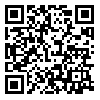Volume 23, Issue 68 (3-2023)
jgs 2023, 23(68): 1-15 |
Back to browse issues page
Download citation:
BibTeX | RIS | EndNote | Medlars | ProCite | Reference Manager | RefWorks
Send citation to:



BibTeX | RIS | EndNote | Medlars | ProCite | Reference Manager | RefWorks
Send citation to:
Mikaeli Hajikandi K, Sobhani B, Varamesh S. (2023). assessment of land-cover change in South part of Lake Urmia using satellite imagery. jgs. 23(68), : 1 doi:10.52547/jgs.23.68.1
URL: http://jgs.khu.ac.ir/article-1-3298-en.html
URL: http://jgs.khu.ac.ir/article-1-3298-en.html
1- University of Mohaghegh Ardabili, kmikaili@yahoo.com
2- University of Mohaghegh Ardabili, Sobhani@uma.ac.ir ,Sobhani@uma.ac.ir
3- University of Mohaghegh Ardabili, varameshs@yahoo.com
2- University of Mohaghegh Ardabili, Sobhani@uma.ac.ir ,
3- University of Mohaghegh Ardabili, varameshs@yahoo.com
Abstract: (8661 Views)
Study of land use/cover changes is widely used in environmental planning. During the last decade, growing increase of aridity in Uromiyah Basin has become a major regional and even national problem. The purpose of this study is to reveal the changes in land use/cover in the southern and southeastern parts of the basin with using 2 images for month of July of 2000 to 2017. Landsat TM and OLI data and NDVI were used for classification this study. Land use/cover maps in the two studied years were provided using Maximum Likelihood Classifier (MLC) algorithm applied on two series data including spectral bands (data series 1) also spectral bands and filter texture layer (data series 2) and six categories of land use/cover containing Irrigated Farmland, Dry Farmland, garden, rangeland, bare land and water bodies were distinguished.. The accuracy of the produced maps were assessed and compared with the training samples derived from Google Earth images and Kappa Index, overral accuracy, producer accuracy and user accuracy. The results demonstrated that the maps produced using the data series 1 have higher accuracy and the overall accuracy of the maps of 2000 and 2017 using the data series 2 are 98.93 and 98.29 and these values for data series 1 were gained 99.28 and 91.45, respectively. In additional, texture filtering decreased amount of mixing between classes of rangeland, Irrigated Farmland and garden. The results of change detection showed considerable increase in the area of Irrigated Farmland (13.44) and garden 1.85 (27.24) an also at the studied period, the area of the water bodies and rangeland were decreased to 1.58 and 22.94%.
Article number: 1
Keywords: Maximum Likelihood Classification, texture filtering, density slicing, Landsat Sensor, NDVI
Send email to the article author
| Rights and permissions | |
 |
This work is licensed under a Creative Commons Attribution-NonCommercial 4.0 International License. |

This work is licensed under a Creative Commons — Attribution-NonCommercial 4.0 International (CC BY-NC 4.0)






